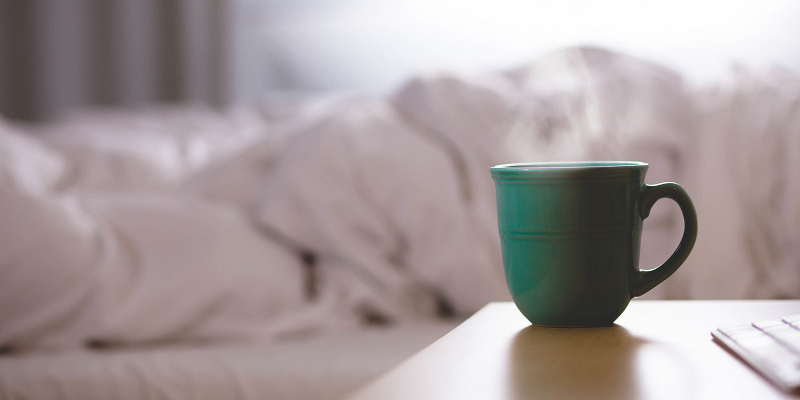Sales line (01507-611065) open : Monday - Friday, 9.30am - 5.15pm.
Shift Work Sleep Disorder: How To Sleep When You Work Nights
If you work shifts, you probably know how hard it can be to sleep. You might well have suffered from lack of sleep, or at least found yourself struggling to nod off when it's bright daylight outside.
What you might not realise is that there's actually a real condition associated with shift work and sleep patterns. It's called Shift Work Sleep Disorder (SWSD), and it can be a nightmare (excuse the pun) for anyone who suffers.
If you regularly find yourself unable to sleep, or you're simply a shift worker looking for some tips on how to sleep better and avoid SWSD, this is the post for you.
Keep reading to find out what the signs of Shift Work Sleep Disorder are, who's most at risk, and how you can avoid it.

What is SWSD?
Humans are diurnal animals – we're naturally programmed to be awake in the day and asleep at night. For some people who work during the night though, that needs to be changed, so you essentially become nocturnal.
The thing is, your sleep patterns are controlled by your body clock, known as your circadian rhythm. This rhythm tells your body when it should be awake and when it should be resting. And one of the key things that helps it know, is the presence of light. Light is a signal to your body that you should be awake, while dark is a sign that you should be asleep – not ideal when you work at night.
Throw rotating shift patterns into the mix and you can see why it quickly becomes a problem.
Of course, many people who work night shifts have no problem adapting to the changes. But for many others, sleep becomes a huge problem. If you're a shift worker who finds it hard to sleep, it's possible that you're suffering from Shift Work Sleep Disorder.
Symptoms of Shift Work Sleep Disorder
There are several potential signs of Shift Work Sleep Disorder, ranging in severity. Some of the symptoms include:
- Excessive tiredness when you need to be awake (such as when you're at work).
- Inability to sleep when you need to (either struggling to fall asleep or waking up before you've had enough sleep).
- Loss of concentration.
- A lack of energy.
- Increased irritability.
- In extreme cases, SWSD may also cause depression.
If you work shifts and you're suffering from any of these symptoms, it's a good idea to speak to your doctor. They may ask you to complete a sleep journal or diary. They will also ask questions about your sleep habits and working hours, before making a diagnosis.
The effects of SWSD
As well as affecting your sleep levels, SWSD can have knock on effects on your health and well-being.
How?
Well, a lack of sleep causes many health issues. Here are some of the ways that Shift Work Sleep Disorder might affect you:
- Increased levels of anxiety.
- Higher risk of work-related errors and mistakes caused by loss of concentration.
- Increased risk of accidents.
- Mood swings, irritability and depression.
- Reduced level of performance caused by tiredness and fatigue.
As you can see, there's more to it than just struggling to sleep. SWSD can have serious consequences if it's not dealt with.
How to avoid Shift Work Sleep Disorder
If you work shifts, then you're obviously at risk of developing SWSD, whether you work permanent night shifts or shift patterns.
In order to avoid suffering from the disorder, there are a few steps you can take that might help you to sleep better. Here are some tips for sleeping better in the day:
- Stick to a regular sleep-wake schedule. This will help your body become used to the times you're asleep and awake.
- Avoid stimulants like caffeine for several hours before you intend to sleep. While they're helpful for making you alert when you first wake, they can keep you up when you're trying to sleep.
- Use blackout curtains in your bedroom to create the illusion of night – it will make it much easier to fall asleep. If your curtains aren't blackout, you can get a lining to fix to them that will stop the sunlight getting in.
- Ask family members or house mates to remember you're asleep, and to keep noise to a minimum.
- Ensure your mattress is comfortable and supports your posture. If you're looking for a new mattress, check out our guide here.
- Sleep on a bed that offers good support and doesn't disrupt your sleep. If it squeaks and creaks every time you move, it might be time to look for a new one.
- Ensure you get enough sleep on your days off. Adding an extra couple of hours to your sleep whenever possible can help you to repay any sleep debt that you've accumulated.
- Where possible, try to keep to a shift pattern so that you fall into a routine. Frequently rotating shifts can make it much harder to sleep properly.
- Avoid doing too much overtime or working longer hours than you can manage. You need to have enough time to sleep as well as having a social life.
Following these tips should mean that you're able to sleep much better when you are working nights.
Do you work nights and struggle to sleep?
If you're a shift worker, it can be hard to get enough quality sleep to function at your optimum level. But following the tips above can help you to sleep much easier, and should mean you're able to adjust to your shift patterns.
Remember that if you do seem to be struggling to sleep and are suffering the ill effects, contact your doctor.
Let us know your tips for sleeping when you're on shifts in the comments below!



















